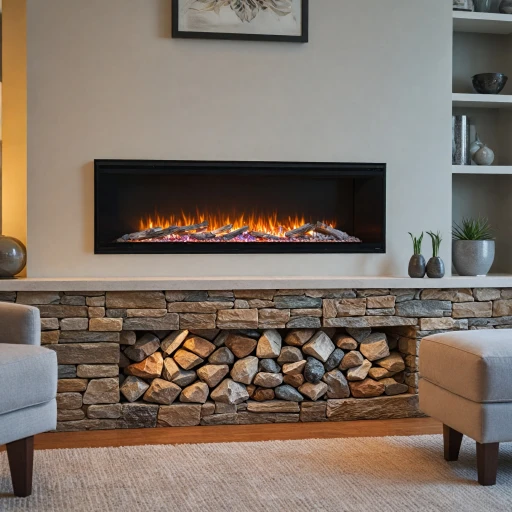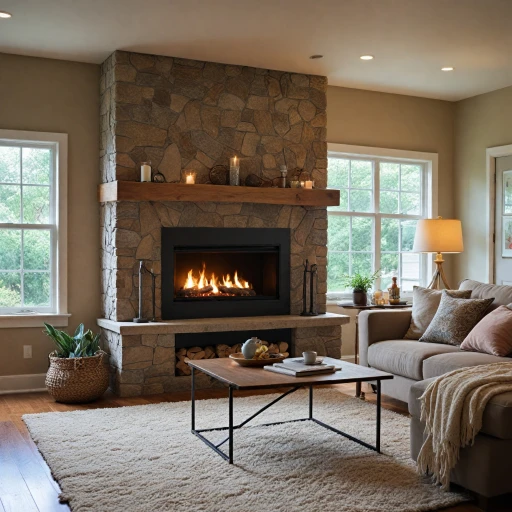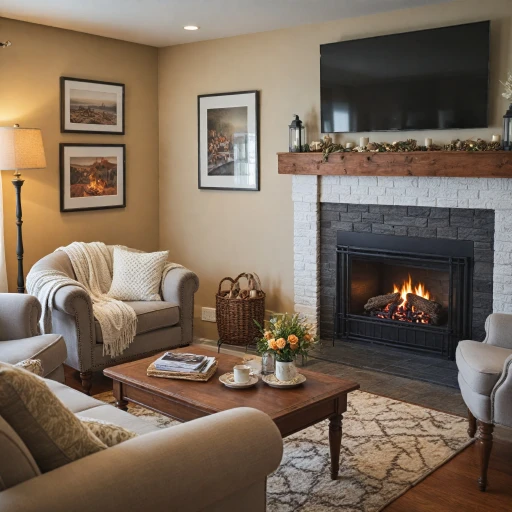
Understanding Gas Fireplace Kits
Diving Into the Basics of Gas Fireplace Kits
If you've ever considered updating your home with a stunning gas fireplace, exploring the ins and outs of gas fireplace kits is essential. These kits come with everything you need to install a gas fireplace, whether it's powered by natural gas or propane. Here's why you might want to look into them:
- Affordability: Gas fireplace kits can be a more price-friendly option than their traditional counterparts. Depending on the kit, you can start seeing price reductions right at the sale price.
- Convenience: With items like direct vent, vented, and ventless options, flexibility in installation is a key benefit. You can even select between match lit and remote ready features, accommodating your personal fireplace view needs.
- Versatility: Kits cater to both indoor and outdoor installations, making them adaptable for any home setting.
- Ease of purchase: Many kits come with free shipping options, meaning you can shop from the comfort of your home without worrying about additional costs.
- Advanced Features: Some kits come equipped with a valve kit or a remote control, adding a layer of modernization to your fireplace setup.
Understanding the basic types of gas fireplace kits and their features is the first step to transforming your living space. Remember, the natural feel and aesthetic enhancement they offer can bring warmth and charm to any environment, making them a worthwhile investment over traditional heating options.
Comparing Gas and Electric Fireplaces
Weighing the Options: Gas vs. Electric Fireplaces
When it comes to choosing between gas and electric fireplaces, there are several factors to consider. Each type has its own set of benefits and potential drawbacks, making it essential to understand what each offers to make an informed decision.
Warmth and Ambiance
Gas fireplaces are known for their ability to produce real flames, offering a natural and authentic fire experience. They often come with options like remote-controlled gas fireplace logs, which add convenience and ease of use. On the other hand, electric fireplaces use LED technology to mimic the look of flames, providing a cozy ambiance without the need for a chimney or venting.
Installation and Flexibility
Gas fireplaces require a connection to a natural gas line or propane tank, which can limit their placement options. They may also need venting, depending on whether they are vented or vent-free models. Electric fireplaces, however, offer more flexibility in terms of installation. They can be placed anywhere there's an electrical outlet, making them ideal for apartments or homes where structural changes are not feasible.
Cost Considerations
The initial price of a gas fireplace can be higher due to installation costs and the need for a gas line. However, they tend to be more cost-effective in the long run if you frequently use your fireplace. Electric fireplaces generally have a lower starting price and are easier to install, but they might increase your electricity bill depending on usage.
Environmental Impact
Gas fireplaces burn natural gas or propane, which are cleaner than wood but still produce emissions. Electric fireplaces, on the other hand, do not produce any emissions during operation, making them a more environmentally friendly option. However, the source of your electricity can impact their overall environmental footprint.
Ultimately, the choice between gas and electric fireplaces will depend on your specific needs, budget, and preferences. Whether you prioritize the authentic look of real flames or the convenience and flexibility of an electric model, both options offer unique benefits to enhance your home.
Installation Considerations for Gas Fireplace Kits
Fitting Gas Fireplace Kits into Your Space
When installing a gas fireplace kit, whether it's a direct vent or a ventless model, there are a few things to consider to ensure it fits seamlessly and safely into your home. Gas fireplaces, using either natural gas or propane, offer a wide range of designs and installation options to suit different homes and lifestyles.- Location and Venting: Consider where you want your fireplace. Do you have an existing fireplace or chimney, or would you prefer a ventless option? Direct vent fireplaces require access to an exterior wall or roof for the venting, while ventless models, like the match lit or remote ready options, offer more flexibility in placement. Always ensure proper clearance and adherence to any local building codes.
- Space Requirements: The size of your space determines the fireplace size. Smaller rooms can be heated efficiently with compact models, while larger areas might benefit from a more robust unit with multiple burners. Outdoor gas fireplaces are another great option if you're looking to enhance your backyard with added warmth and style.
- Installation Costs: The price of installation can vary significantly. A vented natural gas fireplace might come with higher upfront costs due to venting requirements but offers long-term efficiency and safety. Compare these costs with the sale price of vent free systems, which are often lower and coupled with free shipping promotions.
- Remote Control and Automation: Many modern gas fireplaces come equipped with a remote control, making them highly convenient and providing control over heat settings and flame height. Consider a remote ready model for ease of use.
Cost Analysis: Gas vs. Electric Fireplaces
Getting Ahold of Your Pocket: Pricing and Options
When it comes to fireplace decisions, the wallet is often the compass guiding your choice. Electric fireplaces often boast a lower price point compared to their gas counterparts, which can sometimes charm those diving into home improvements. But before shifting your dreams towards electric flames, let’s put the magnifying glass over both options. A clean and smoke-free burn is what you get with an electric fireplace. With prices starting relatively low, it's a quick win in terms of initial spending. Plus, their installation is often as breezy as plugging in a kitchen appliance. But, seeing is believing—an outdoor gas fireplace can add that unparalleled touch of authentic warmth, which some folks just can't shake off. Gas units, however, come with a few more strings, including the right vent. You’ll encounter either direct vent or ventless options. Each has its tale of pros and cons. Vented natural gas fireplaces prioritize safety and efficiency, although keep an eye out for the costs related to professional installation and necessary equipment like a vent gas or a direct vent. Meanwhile, going vent free can save you installation hassles but may come with more upkeep. Now, let’s consider the long game: Energy costs. Natural gas prices may fluctuate, impacting your gas fireplace’s operating costs. Electric models tend to be steadier in this department. Then, there's the charm of remote control convenience, prevalent in both options. The choice, at the end of the day, may ride on how eco-conscious you want to be and your tolerance for spending upfront vs. paying as you glow.Environmental Impact and Energy Efficiency
Evaluating the Green Factor and Energy Smarts
When pondering the ecological and energy-conscious attributes of fireplaces, it's important to see how gas and electric options stack up. Both present their pros, and picking the right one depends on your values and needs. Many folks turn to electric fireplaces for environmental reasons. These models convert electricity into heat without the hustle and bustle of a chimney. They operate at nearly 100% efficiency, meaning almost no energy is wasted, unlike vented options where some warmth escapes through the exhaust. Another perk? Electric versions don't burn fossil fuels like natural gas or propane, eliminating emissions and reducing carbon footprints. This can make a world of difference for those eyeing a green lifestyle. On the other side of things, gas fireplaces, whether vented natural gas or propane, have their charm. If you're a fan of an authentic flame and the aesthetic appeal of gas logs, they're tough to beat. They can heat large spaces fast and work even when the power's out, a handy feature during outages. However, know that they have a slight disadvantage in terms of efficiency as a percentage of heat will escape through the vent.Power Play: Costs, Maintenance, and Sustainability
From an energy bill viewpoint, gas fireplaces may come across as more cost-effective in regions where electricity rates soar above gas prices. However, factor in the costs of installation, like a direct vent or match lit system, the overall price could be higher in the long run. Maintenance-wise, gas models need regular check-ups for safety, especially if ventless. Proper airflow is a must here. Meanwhile, electric options are pretty much set-it-and-forget-it, needing no chimney sweep or burner service. Lastly, weigh in the sustainability aspect. Natural gas is a nonrenewable resource, and frequent use adds up. While electric fireplaces pull from nonrenewable and renewable energy sources alike, tying them to your home's green energy supply can offer a more eco-friendly fire in your home. Choosing the most suitable option involves more than just the 'feel good' factor. Consider the practical aspects like your home setup and preferences, ensuring a balance between comfort and conscience.Choosing the Right Fireplace for Your Home
Picking the Perfect Fireplace for Your Living Space
Deciding between a gas fireplace and an electric one can be a bit like trying to choose between coffee and tea: both are excellent choices, but they each bring distinct attributes to the table. Here's how you can select the best option for your home. Gas fireplaces, whether vented, vent-free, or direct vent, use natural gas or propane to create realistic flames. They're great for those looking for authentic fire views and cozy warmth. If you decide to go the gas route, consider a gas fireplace kit which includes gas logs, a burner, and a valve kit for easy installation. With options like the remote ready feature, you can control your fireplace with a simple click. Electric fireplaces, on the other hand, offer simplicity and flexibility, often coming with features like remote control and free shipping options. They typically have a lower starting price and are a breeze to install, requiring no venting unlike their gas counterparts. Electric fireplaces are ideal for modern spaces, offering sleek designs and often acting as a focal point in any room. Here are some factors to help narrow down your choice:- Installation Considerations: Electric fireplaces can be installed almost anywhere since they don’t need a vent. Gas fireplaces usually need a specific setup based on venting requirements.
- Operational Costs: Compare the sale price and regular price differences, keeping your budget in mind. Consider the cost of natural gas versus electricity and see which fits your financial plan.
- Outdoor Use: If you’re thinking about an outdoor fireplace, a gas option might be more practical. The natural look and warmth of an outdoor gas fireplace make it a popular choice.
- Maintenance Needs: Gas fireplaces may require regular maintenance to ensure safe operation, while electric models typically just need occasional cleaning.












